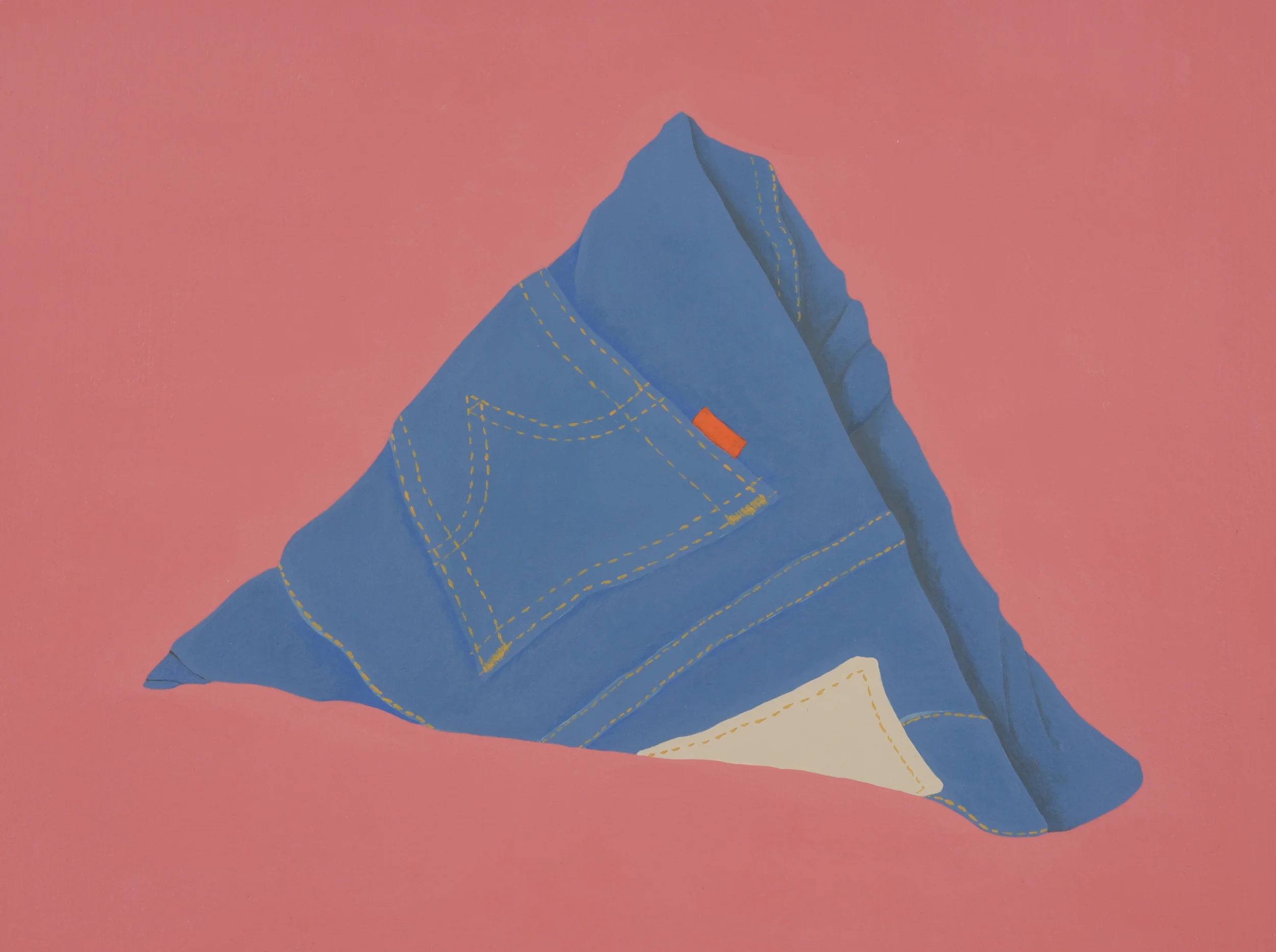







America as Metaphor
the Art of Hiroyuki Nakamura
America as Metaphor: The Art of Hiroyuki Nakamura
Looking through Hiroyuki Nakamura’s paintings, we’re taking in no one thing: We’re only ever perceiving a glimpse of a larger, fluctuating landscape, a land at times with people who appear to be both a natural part of their own changing world and yet somehow above it all, conscious of their own warped reality, yet going about their day, reflecting with little wonder, as though people at a carnival peering into a zerrspiegel that enfolds and re-presents them within their own surrounding variation; or like actors (note the face paint/masks) who know they’re acting in a wild scene, and yet they surrender themselves to the performance, mostly, improvising with whatever’s been given to them at the time—tight shorts, a cowboy hat or Native American headdress, a bloody apron, a pink flamingo, or even a guitar shaped like a pink flamingo. For me, Nakamura’s paintings are e pluribus unum in the flesh: A fluid us, always in flux.
Of course the word “surreal” comes to mind: One look at the flag-folded blue jeans against a backdrop of pink; or the proportions of the stage-diving, undressing cowgirl—and sure, you can certainly invoke that school of art. But the paintings feel more than surreal. Nor does the artist use the word surreal to describe his art, himself. Instead, he views his work as documentation of an “America Land”—not America, that’s an important distinction, but a metaphorical space, an unbound "land" or the very dream of a land that’s being qualified or possessed by America itself: There's this flowing, invisible world between "two riverbanks on either side of one Mississippi River," as the artist puts it in his statement, which I interpret as different states of mind that, by definition, never touch, aren't even contiguous like the states, but which are also definitively held together by the very change that separates them.
And what could be more American than that?
The word “documentation” is critical, too, not just because of the artistic referent it provides, but because it illustrates that rich tension between definition (thesis) and narration (antithesis), another very American theme, which Nakamura’s art deftly embodies. This the meta metaphor come to life: Here’s a man studying the inside of his hat while the world around him waits, burns, blooms, stands blankly or spins mechanically for attention. While over here, a warped cowgirl stage dives (flies away?), shedding her clothes like some chrysalis. And then there’s the family on the lawn, leisurely soaking up the day, relaxing each in their own ways; but how could they relax, you wonder, given how utterly bizarre everything is around them—how odd they are themselves, and to each other? And to us?
What does all this mean?, you might ask. How does all this difference “fit” together? Well, I’m sure I don’t know. Maybe we're not supposed to know, totally, only guess from one moment to the next. That’s a little thrilling, isn’t it?
And so, I'm equally thrilled to feature Hiroyuki Nakamura’s art in Issue #3 of Jam Tarts. I find his paintings exciting and troubling, not unlike living in America itself. At least, that’s my take; I hope you find your own reasons for enjoying his work, too.
—Frederick Speers, Founding Editor of Jam Tarts